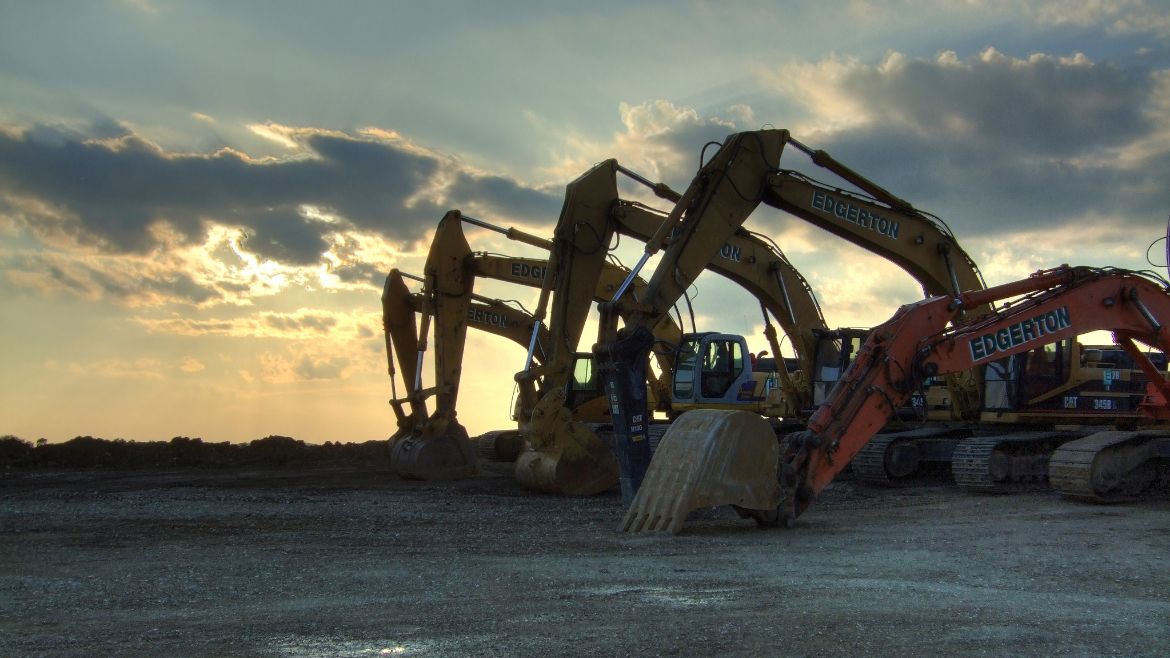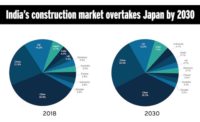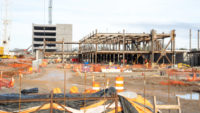The construction outlook for 2022 is looking positive, but the industry will face challenges, says Anirban Basu, chief economist for Associated Builders and Contractors and CEO of consulting firm Sage Policy Group.
Basu shared his economic forecast for the industry during a webinar for ABC’s Construction Executive on Dec. 8. The impacts of the Infrastructure Investment and Jobs Act won’t be as immediate as the 2009 infrastructure package, which was focused more on shovel-ready projects to kickstart the economy, but Basu says he expects projects from the new infrastructure package to be released in the third and fourth quarters of 2022.
"I think that 2022 is going to be a very busy for you all," he says. "Think very long and hard before you enter into contractual obligations. Make sure you build enough margin and contingency."
Skyrocketing home prices may also have a positive impact on the construction industry. Local governments drive much of their revenue from property taxes, and Basu says home re-assessments will mean more tax base for many communities, ensuring those governments still have money available for construction projects. Plus, much of the money for government construction included in the American Rescue Plan has yet to be spent.
“So state and local government spending, even without [the infrastructure package], would have been a driver of construction activity,” Basu says. “But now infrastructure factors on top of those monies, so you should see a lot of state and local spending on construction going forward, including school construction, which stands to be one of the big winners.”
The annual inflation rate in the U.S. reached a three-decade high of 6.2% in October. Basu says inflation will likely remain high in 2022, but he expects a more hawkish Federal Reserve may help limit the inflation rate to 3-4% next year, with a drop coming later in the year.
The prices of construction materials have also risen rapidly over the past year. As of October, the 12-month producer price index for steel mill products was up 141.6%, according to the U.S. Bureau of Labor Statistics. But Basu says a lowering inflation rate, along with expected rising interest rate and the recovery of manufacturing and supply chains, could help lower the prices of materials like steel, copper and aluminum.
With so many public projects likely coming in the next year, Basu says it may be the time to pursue mergers and acquisitions.
“I think, to be successful, it’s going to help to be bigger,” he says. “Significant technologies are more expensive, and recruiting costs are significant, and training costs are significant. It’s nice to have a larger line of credit and more bonding capacity to go after some of these large scale projects that are coming down the pipe, whether in infrastructure, or other segments.”
Professional services firm PwC released a report on the 2022 outlook for engineering and construction deals on Dec. 9 that also finds the industry is well-positioned for the coming year, despite issues such as supply chain disruptions, high material costs and labor shortages. The PwC report showed that M&A volume in fiscal 2021 outpace pre-pandemic levels across all construction and engineering segments by 14%. The report projects that the Infrastructure Investment and Jobs Act will boost even more M&A in nonresidential construction.
Hiring may continue to be a challenge in 2022. Construction was still down about 115,000 jobs in November 2021 compared to February 2020, according to the BLS.
During the pandemic, about 1.5-million baby boomers retired earlier than had been anticipated, removing many skilled building trades workers from the industry. But it’s harder to convince young people that construction offers a good future now than it was when those recently retired workers were young, Basu says.
Job growth has also slowed. Basu says many people looking for jobs now don’t want to commute to jobsites, they want remote work.
“They want to wake up when they wake up,” he says. “They want to get rid of their alarm clocks. And so for employers who need workers on site … it could be challenging to recruit."






Post a comment to this article
Report Abusive Comment